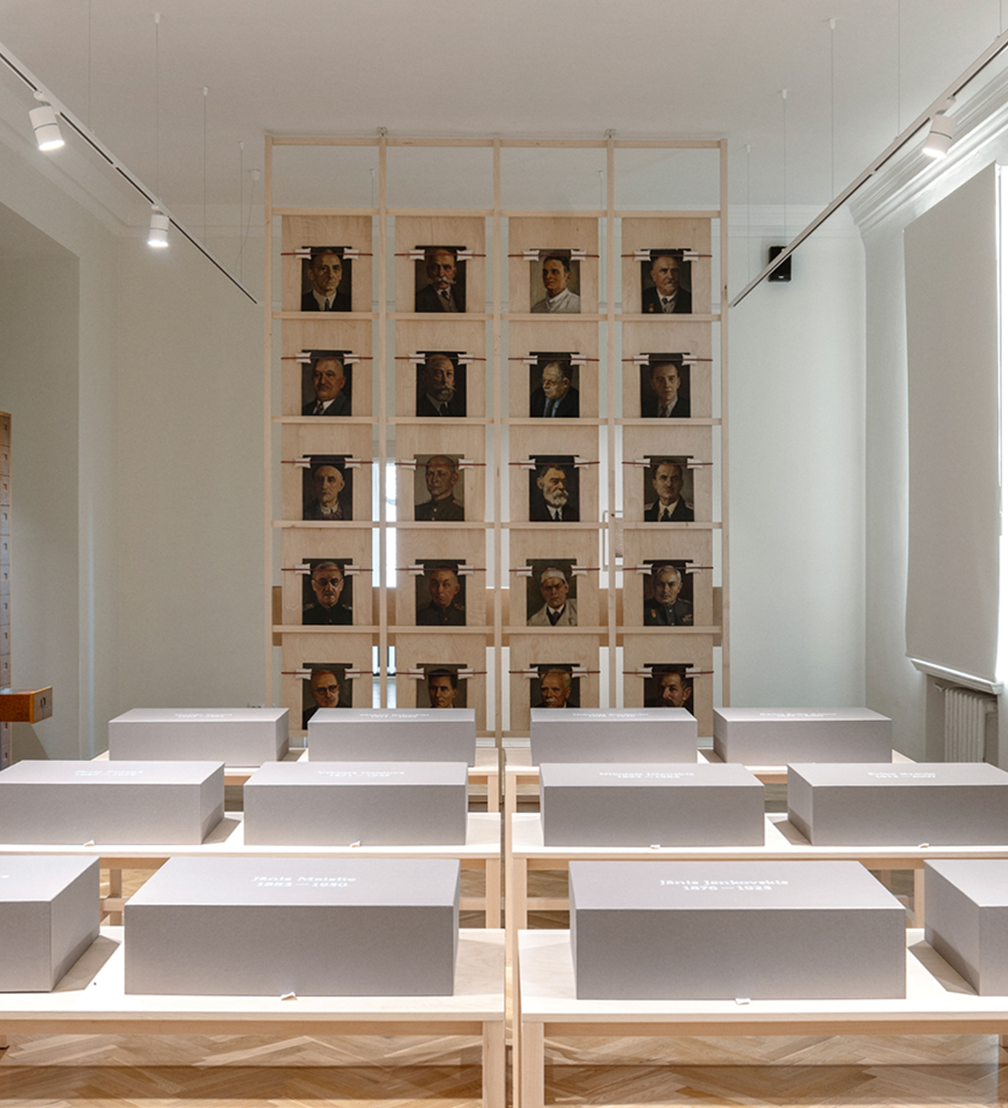
Until the end of August, the exhibition Life after Death. Remembrance Practices and the Museum is on view at the Pauls Stradiņš Medicine History Museum (MVM). Through a thorough self-analysis (or even dissection), the museum critically examines its collection and its formation, asking questions about the functions of memory institutions in the past and present. The exhibition design by designer Rihards Funts, architecture studio Gaiss, and graphic designer Kirils Kirasirovs is also rooted in the archival spaces, borrowing their utilitarian simplicity.
«Not every day goes down in history and not all fame is forever. As we browse and re-examine the historical evidence stored away in the museum’s depository and see the artefacts starting to fade and disintegrate just like memories, the process has given rise to an exhibition entitled Life after Death. Remembrance Practices and the Museum,» says its description. The exhibition is based on the assumption that history museums founded during the Soviet occupation (the Medical Museum was officially established in 1957, but the first exhibition opened in 1945) have still not managed to free themselves from the framework of Soviet ideology.
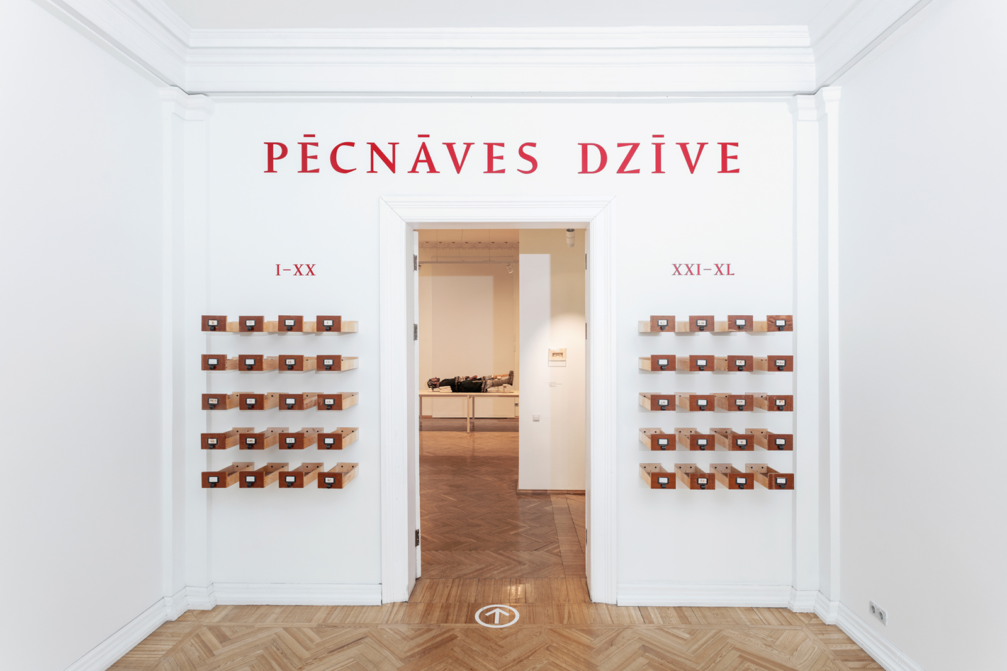
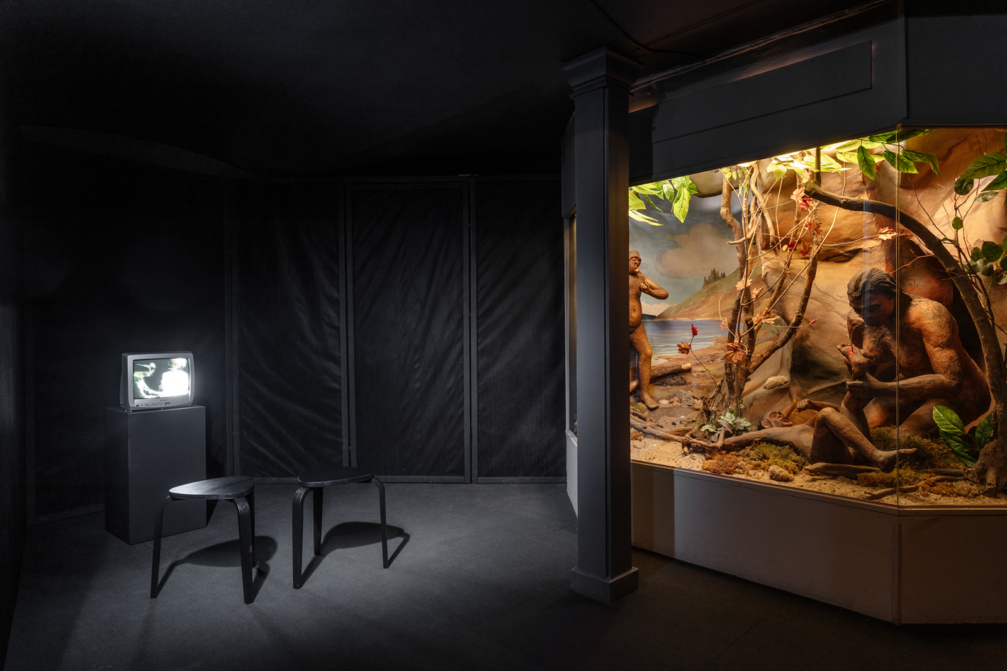
Every museum is founded on its collection, but a number of objects in the MVM collection reveal this foundation to be shaky. Can broken glasses or worn slippers that once belonged to a great doctor tell us much about their contribution to medicine? Not only with pens and ashtrays — the MVM collection also tells the history of medicine through dioramas, where paper and rag puppets recreate scenes of medical treatment from prehistory to the Renaissance. This kitschy and slightly frightening disneyland of medical manipulation has undoubtedly left an imprint on the minds of many younger visitors to the MVM, but its educational function and historical accuracy are less definitive. What to do with such heritage? The creators of the exhibition point out that the objects in the museum’s collection have no expiry date. They are preserved for the future — for the next generations and for needs unknown to us today.
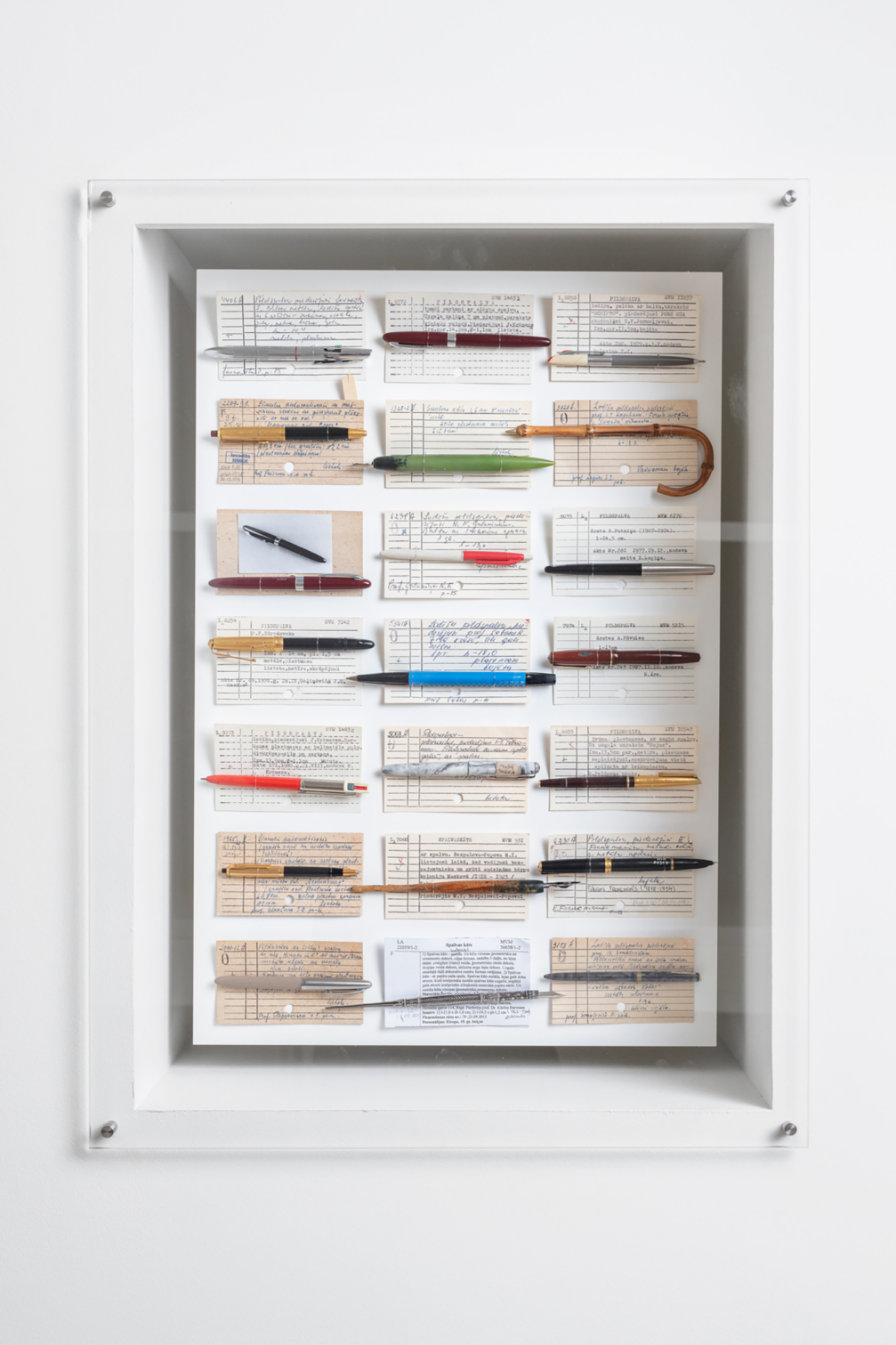
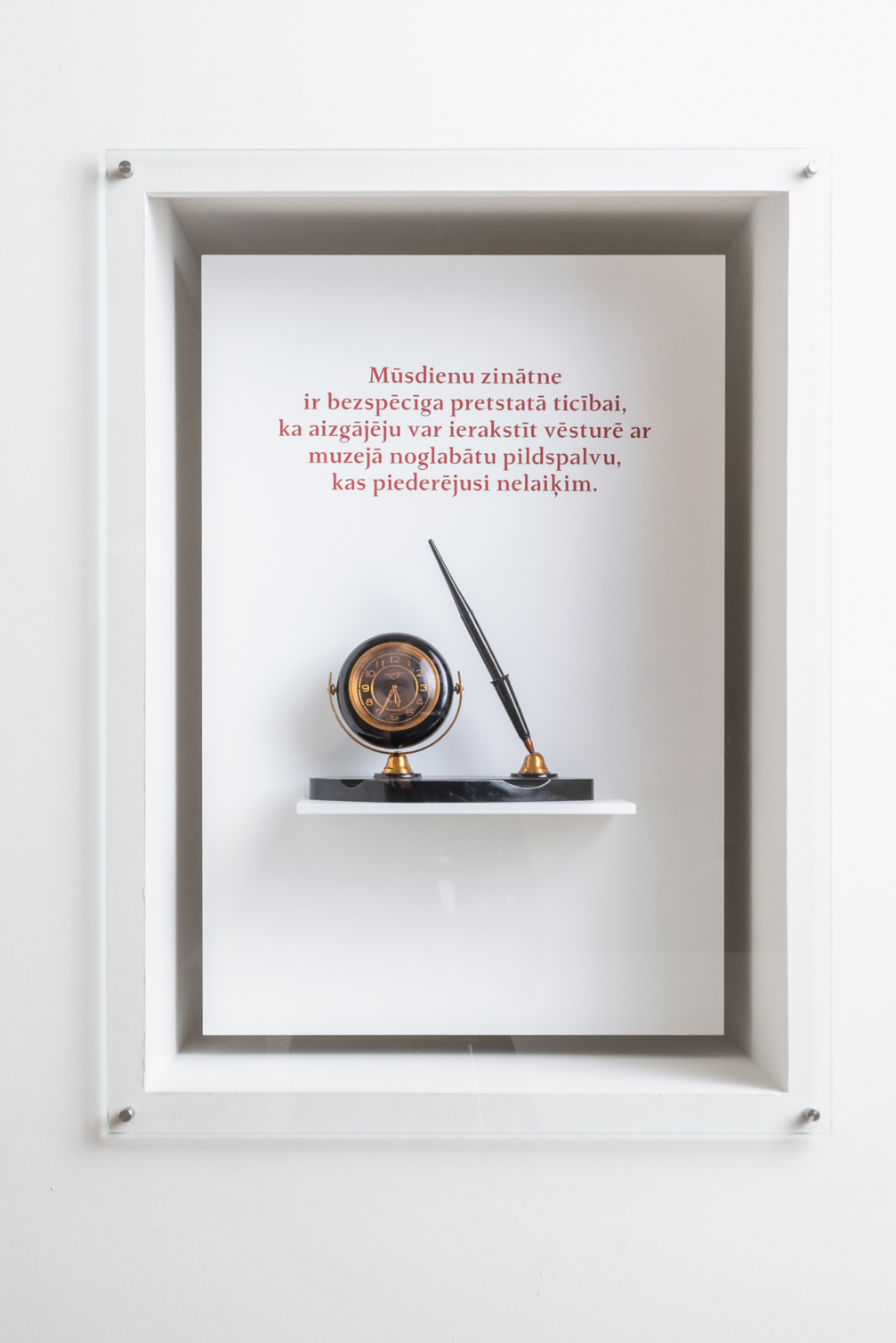
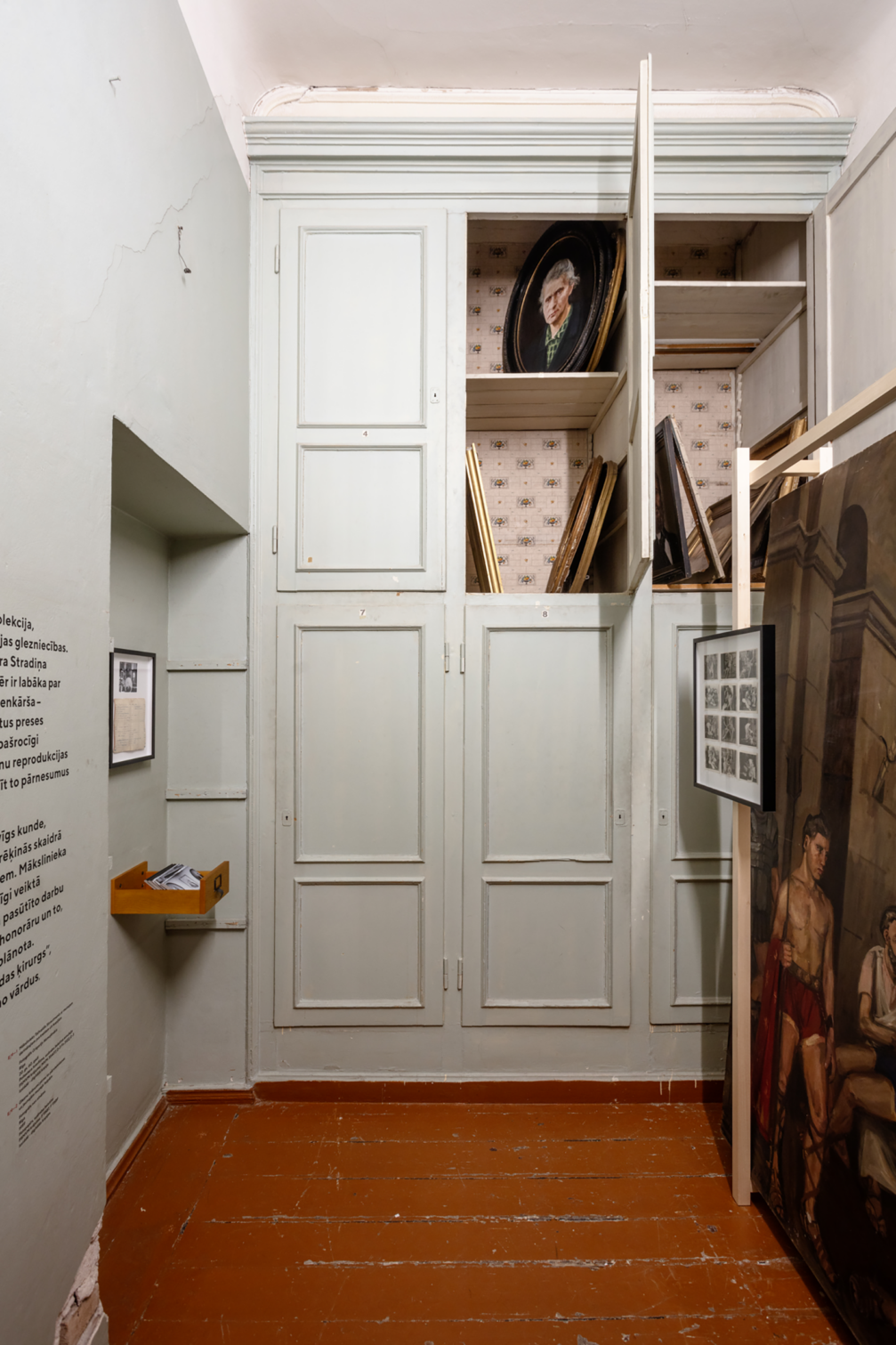
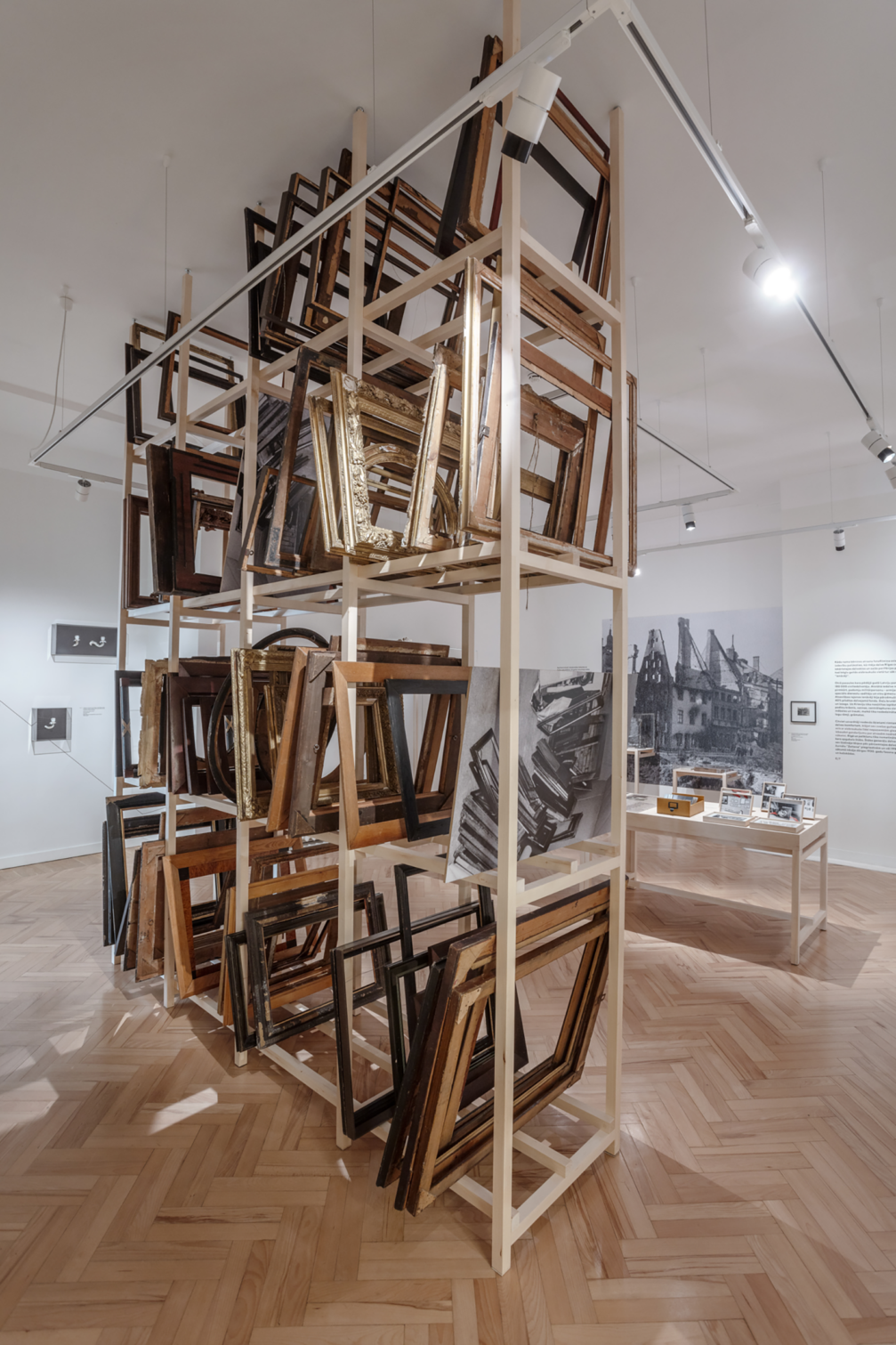
The history of the beginnings of the museum’s collection is also an important theme of the exhibition, as the curators — Kaspars Vanags, head of the MVM, and Kristīne Liniņa, the museum’s chief curator — try to shed light on the conditions of the MVM’s collection formation. Anticipating the fate of the valuable collections of art, books, and other precious objects as Latvia became part of the Soviet Union after the Second World War, Pauls Stradiņš gathered what he could for the collection of the future Museum of Medicine. For example, he acquired the remarkable art collection of the physician Pēteris Sniķeris, which unfortunately fell into disrepair; the depository of the MVM still contains the painting frames obtained by Stradiņš, so numerous that they have not found their use even to this day. In the exhibition, they are silently stacked on a monumental shelf, adjacent to two small rooms — a kitchen and a laundry storeroom — that remind us that the MVM house was once someone’s home.
The museum’s depository is the starting point not only for the exhibition but also for its design. Designers have been involved from a very early stage in the development of the exhibition and have also participated in the selection of the artefacts on display, thus creating a coherent whole between the themes and design solutions. The designers of the exhibition — designer Rihards Funts, architecture studio Gaiss, and graphic designer Kirils Kirasirovs — point out that the artefacts are displayed in a similar way to the museum’s collection, focussing on their physical and material nature rather than their historical or cultural value. «Historically, filing cabinets played a crucial role in organising the museum’s collection. They symbolise the effort to classify the seemingly endless collections of different artefacts. Digitalisation has replaced physical filing cabinets, but empty drawers are still often seen in the corridors of the repositories. The file drawer became the unifying element of the exhibition’s spatial identity,» says Kārlis Melzobs from Gaiss. The drawers greet the visitor at the entrance to the exhibition, and references to the archive permeate the entire exhibition, both in the laconic and utilitarian aesthetic of the design and in the visitor experience, that invites everyone to become a researcher themselves.
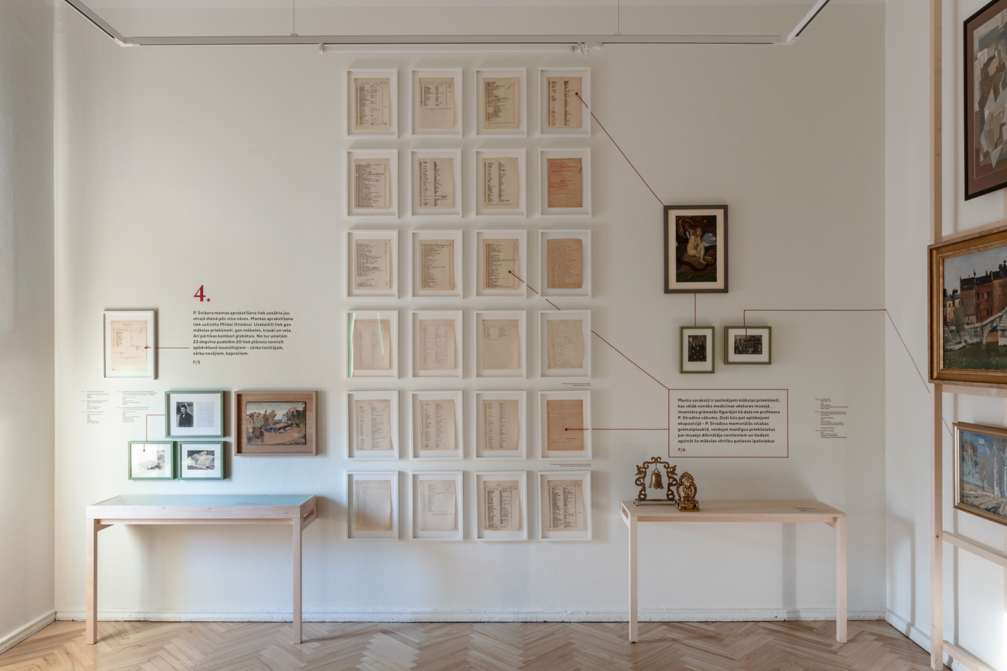
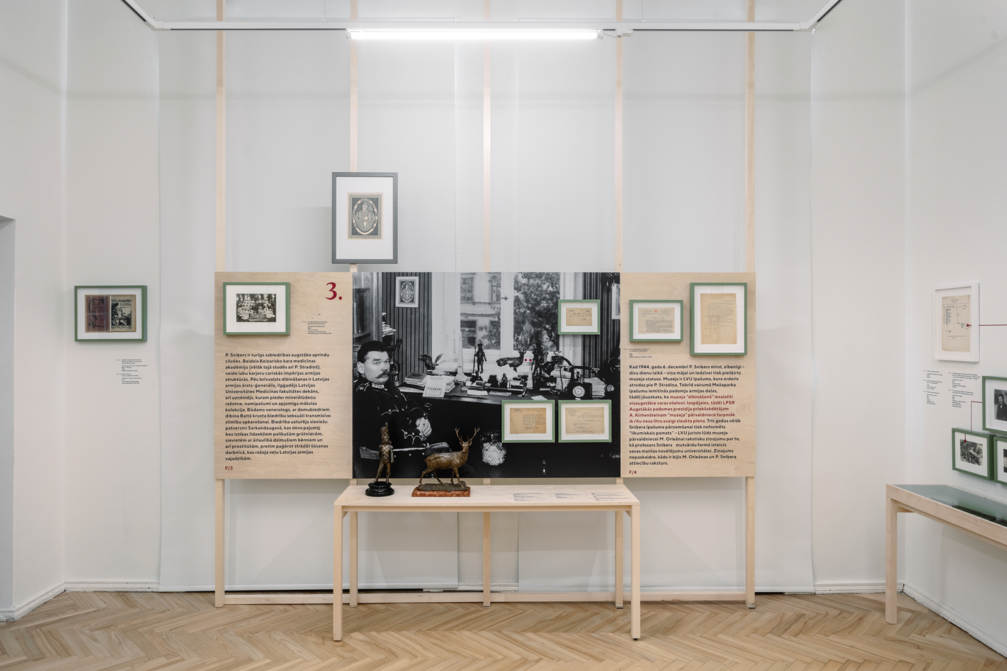
This experience is most vivid in the room where sixteen cardboard reliquaries are arranged on tables, shaped like the archive boxes back in the day. The visitor is invited to lift the lids and examine the artefact — the same worn slippers and broken spectacles that entered the museum’s collection after the death of the doctor in question. What picture do these shards of history reveal? What do they tell us about their owners? At the back of the same room, twenty portraits of doctors, painted on cartboard for one of the museum’s historical exhibitions, are displayed on a timber framework. They are secured in the same way as in the museum’s depository, with rubber straps and handmade pads that show the care taken by the museum staff for each artefact in the collection.
The utilitarian aesthetic of the exhibition is not only a reference to archival spaces but also a sustainable choice. The newly constructed shelves are material-efficient timber frames made from wooden beams, and the cardboard used for the boxes is a resource-efficient and easily recyclable material. The exhibition is partly furnished with existing display cases, while the newly made furniture is designed in a laconic, neutral form language that fits in with the existing museum equipment and can therefore be reused in other projects after the exhibition is over.
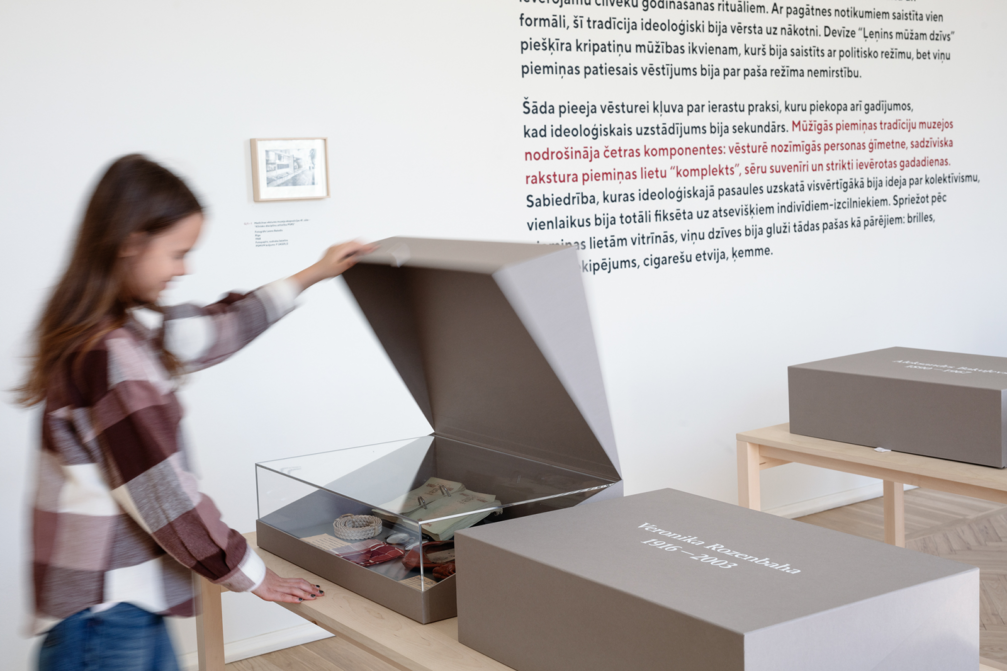
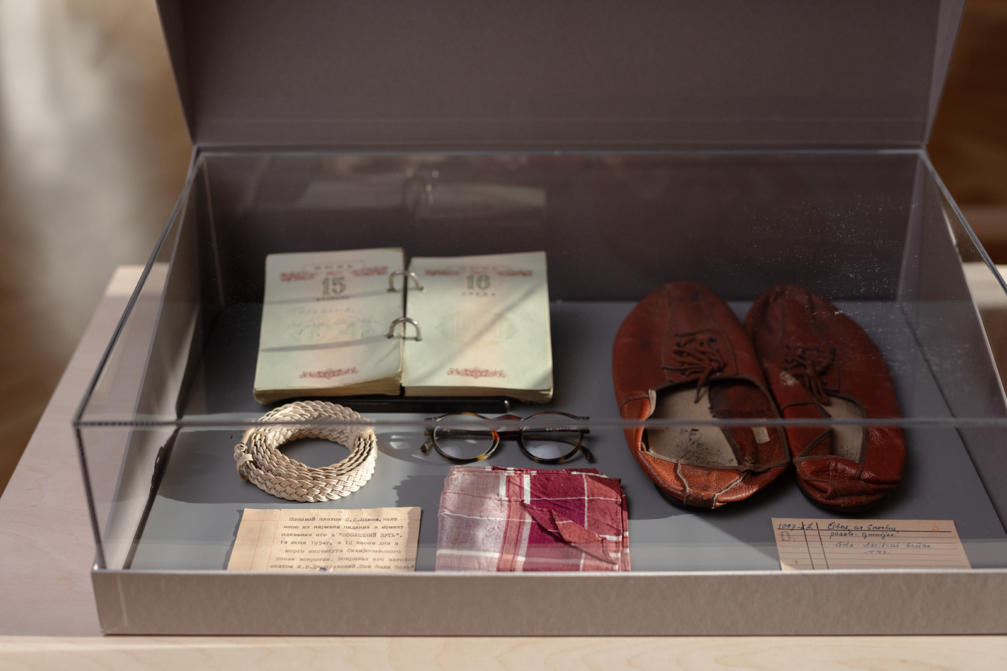
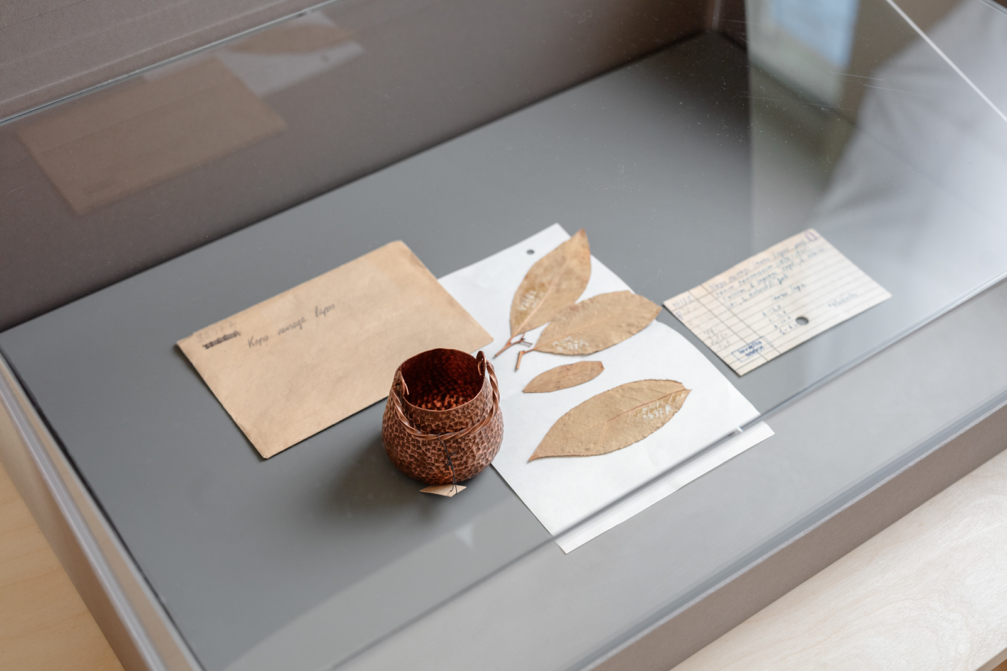
After examining the doctors’ memorabilia, visitors are invited to open the last drawer of the exhibition, which holds the memorial sashes of Pauls Stradiņš. You pull and explore, and then pull some more—for the culmination of the exhibition, the designers have created a drawer two meters deep (which is still not enough to hold all the memorial sashes dedicated to the founder of the museum, which are still added to the MVM’s collection every year to commemorate Stradiņš). Kārlis says of the object: «The installation allows visitors to physically experience the sometimes surreal scale of the objects stored. The length of the drawer provokes one to overcome the body’s memory and pull it further than one would instinctively like, making one look deeper — to feel the museum’s collection beyond the everyday and our time.»
The exhibition Life after Death. Remembrance Practices and the Museum at the Pauls Stradiņš Medicine History Museum is on view until August 31. For more information about the exhibition, visit the MVM website.
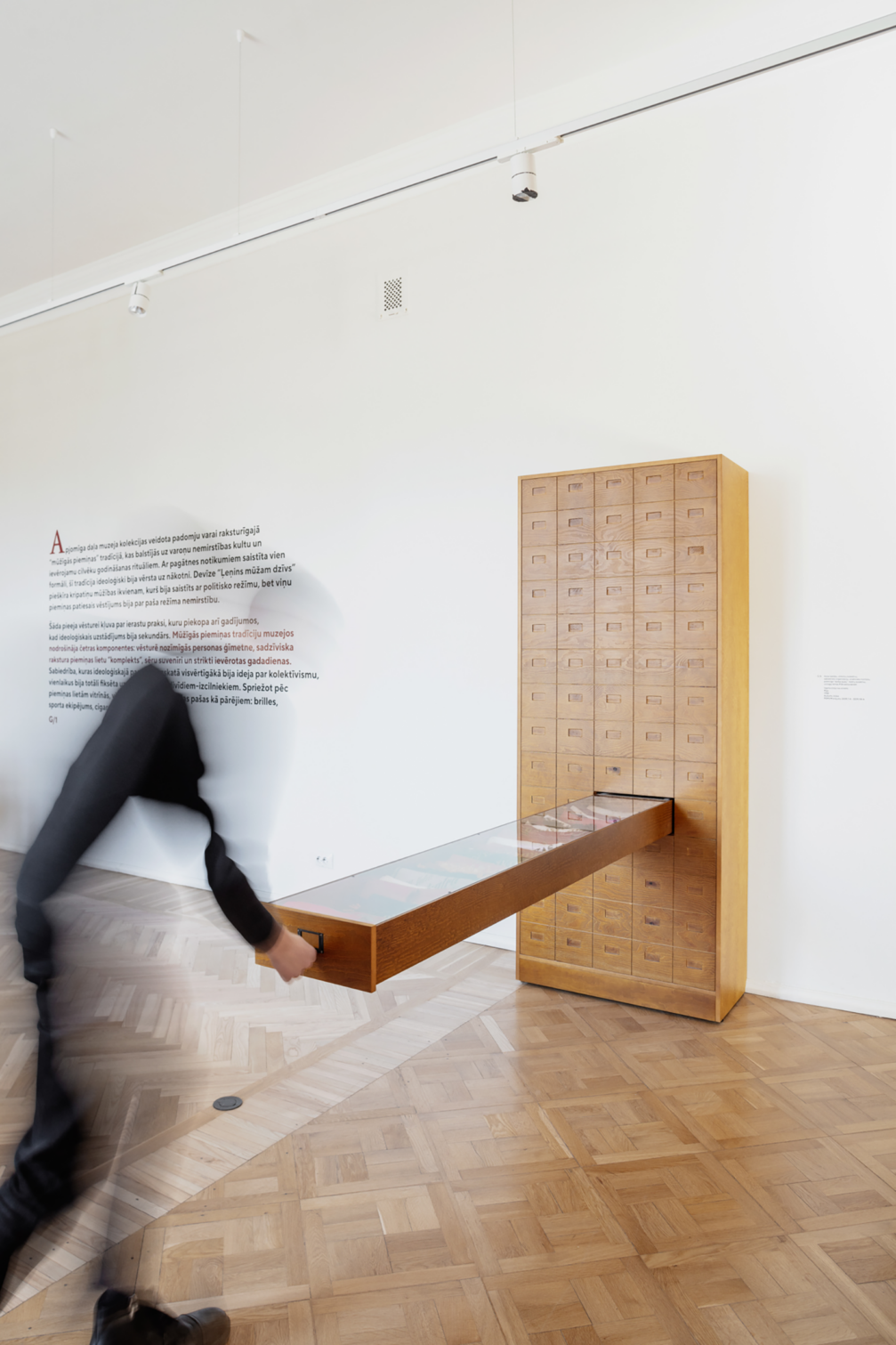
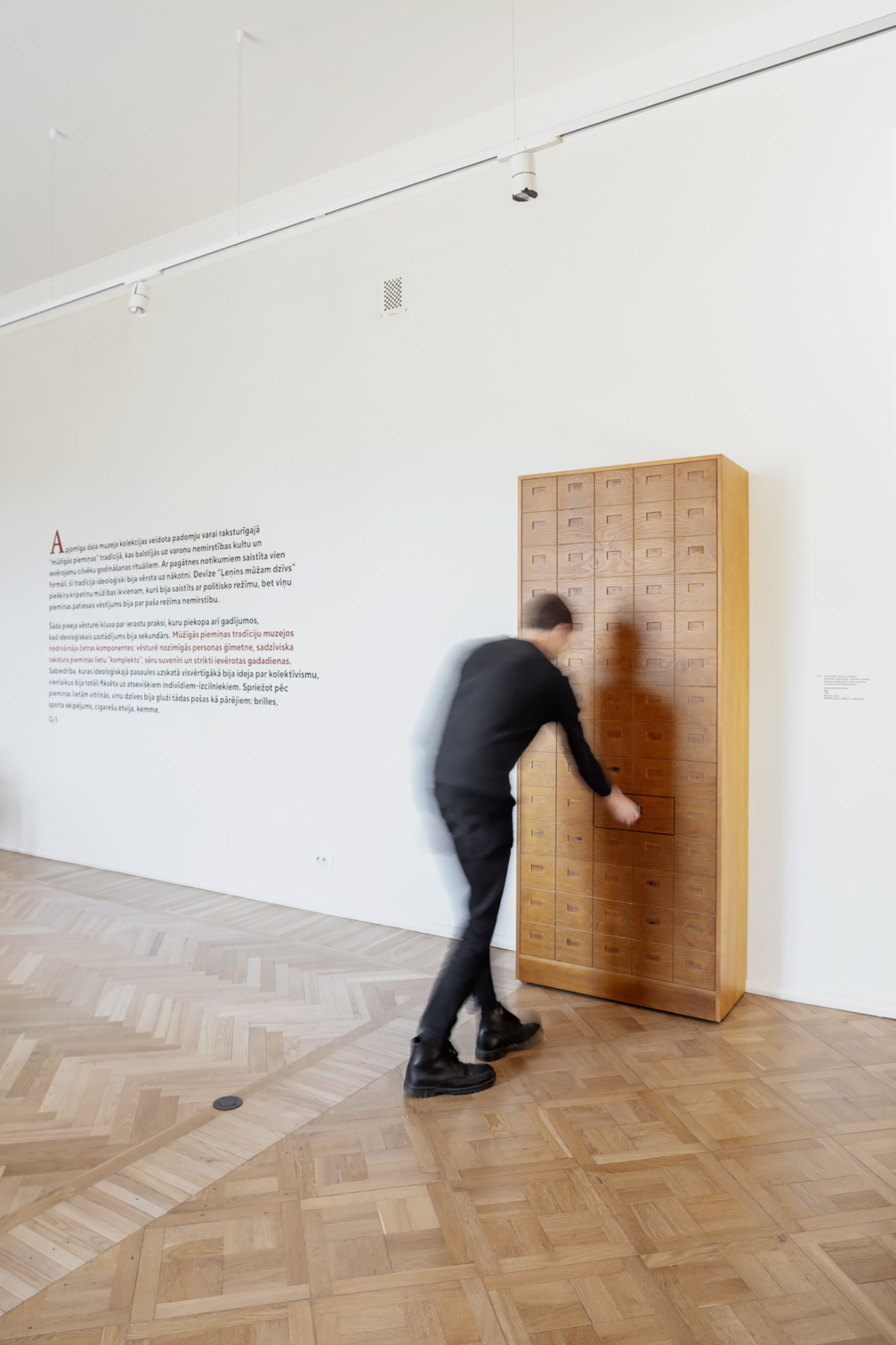
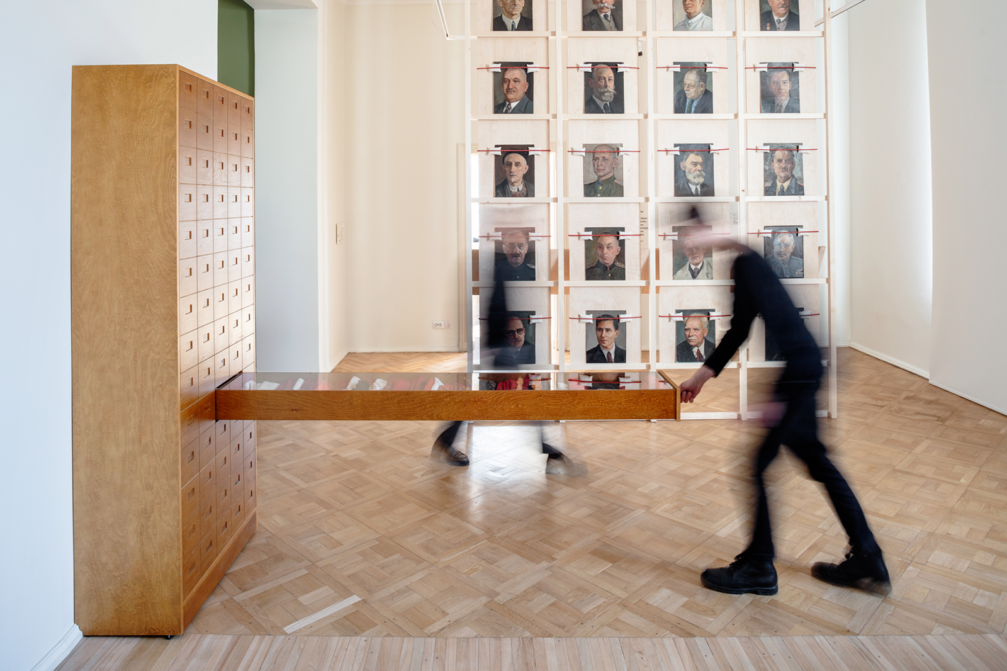
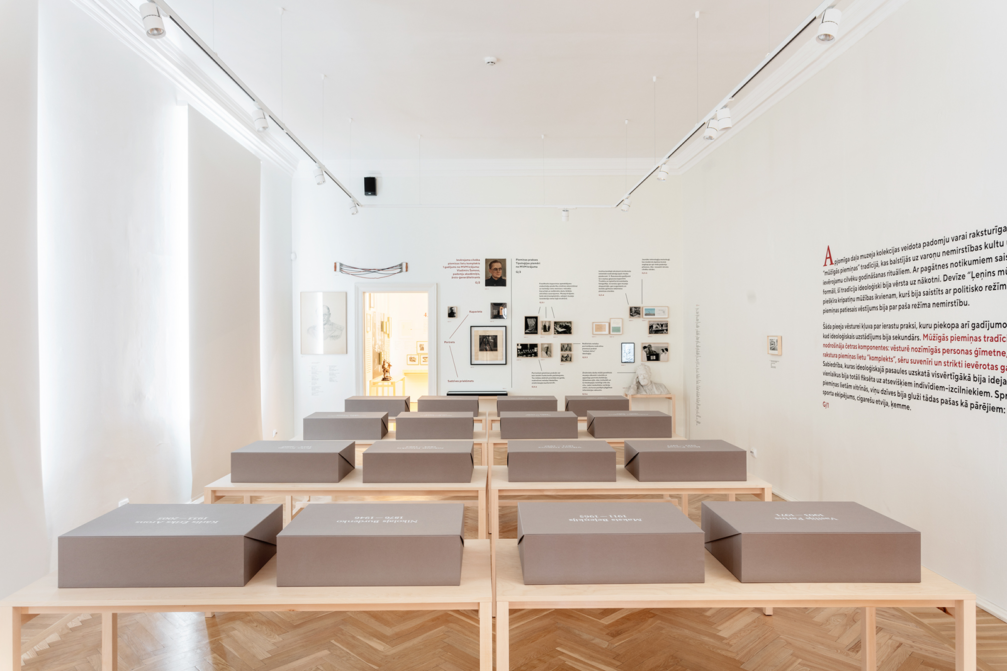
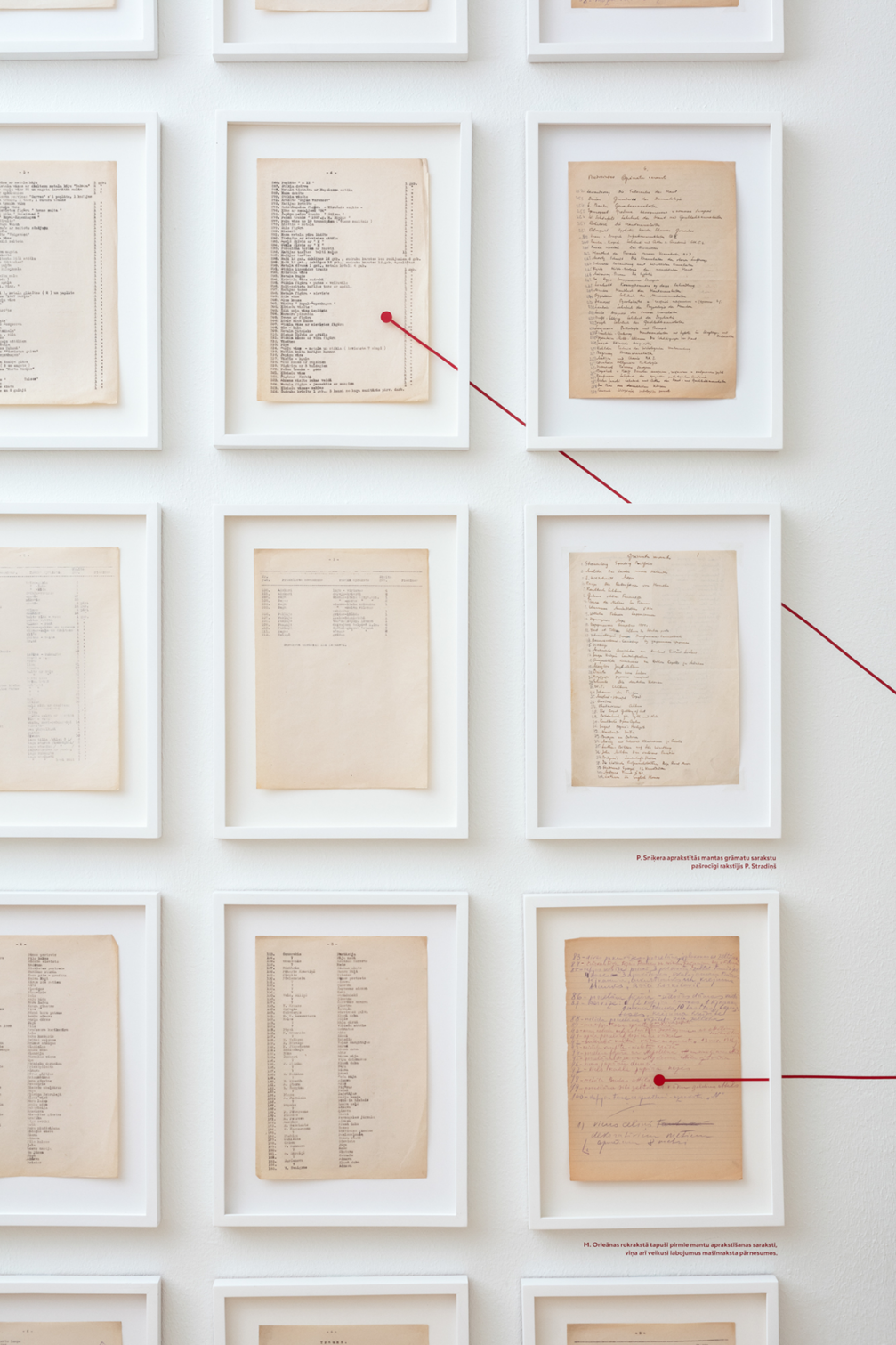
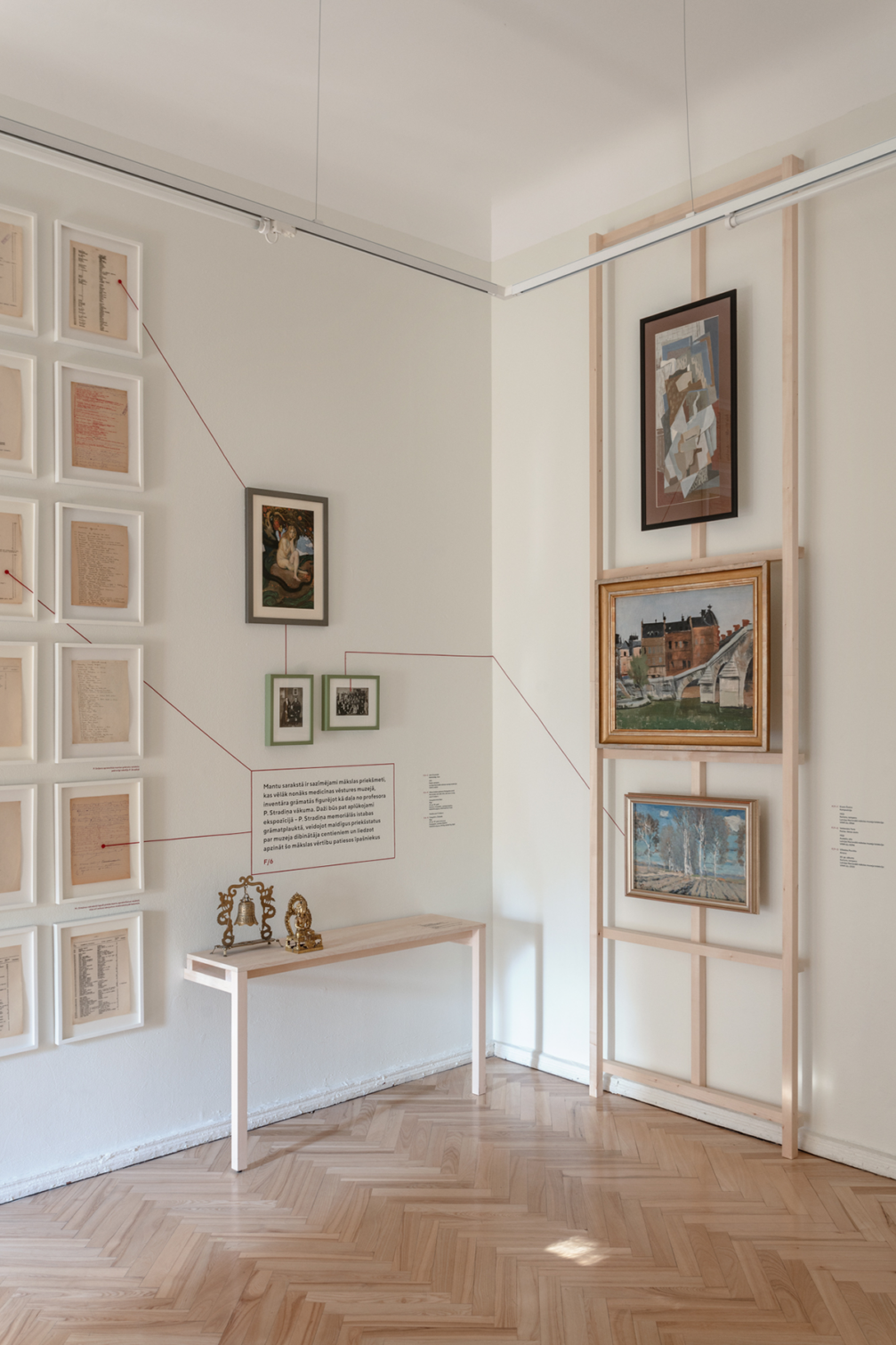
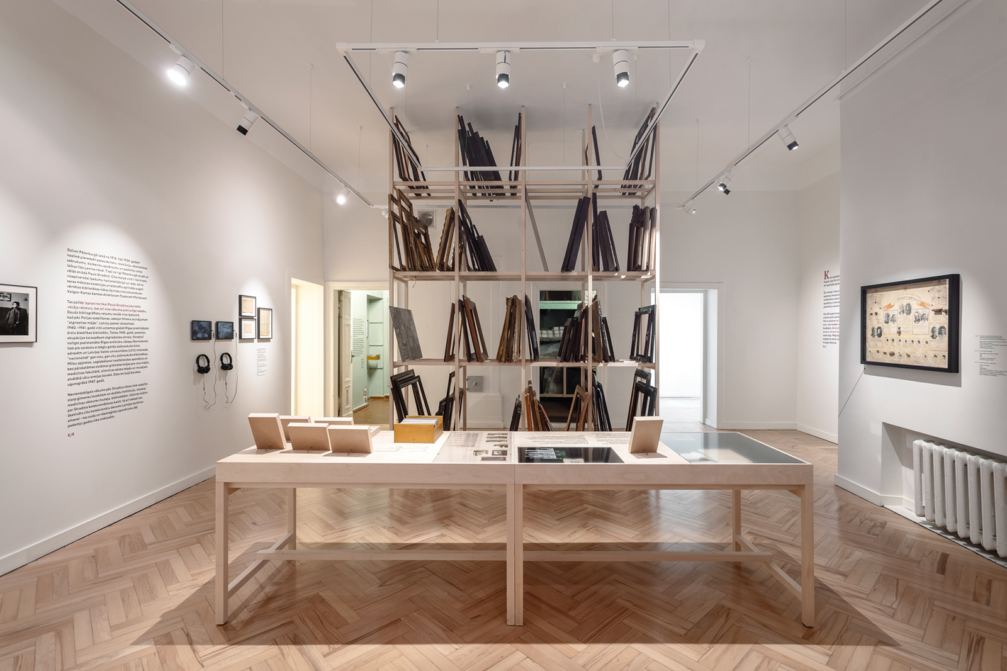
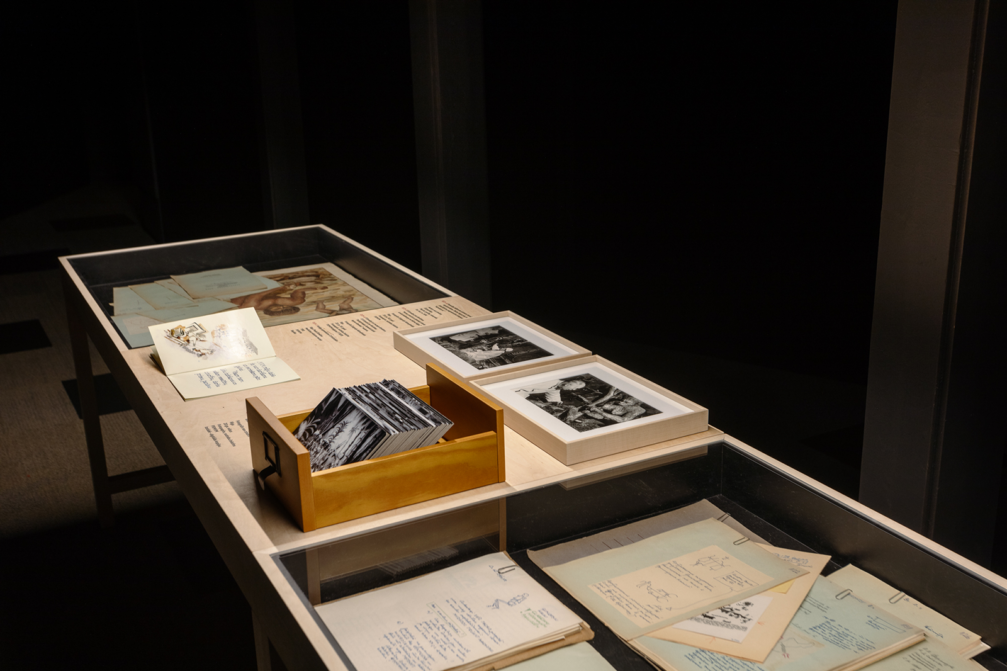
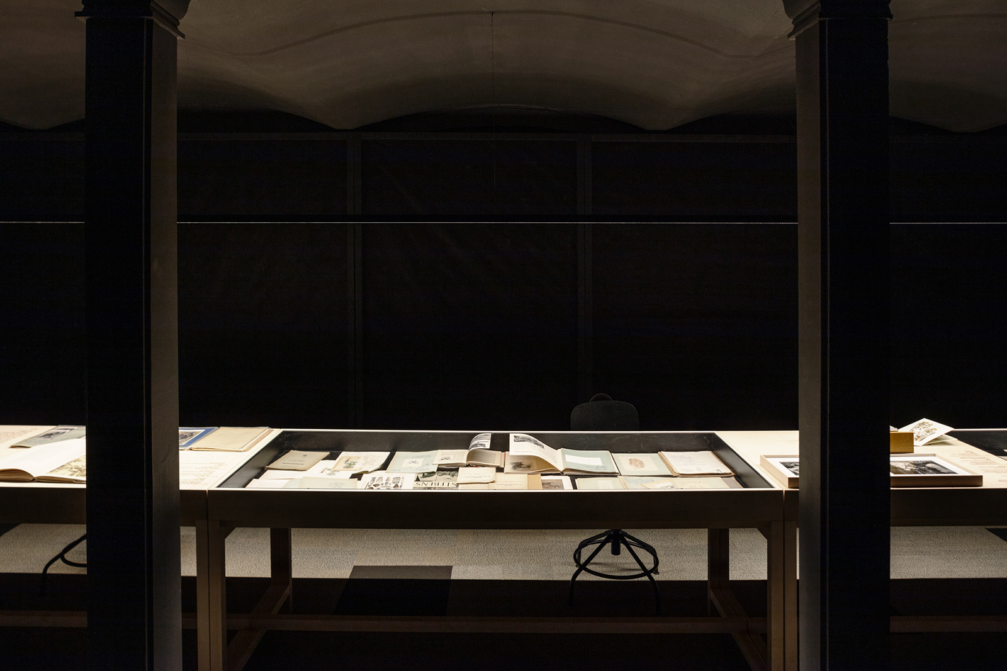
Curated by Kristīne Liniņa and Kaspars Vanags. Exhibition design and architecture by Rihards Funts and architecture studio Gaiss (Arnita and Kārlis Melzobs). Graphic design by Kirils Kirasirovs. The exhibition is supported by the State Culture Capital Foundation, Riga City Council, MVM Support Foundation Society, and Valmiermuižas beer.


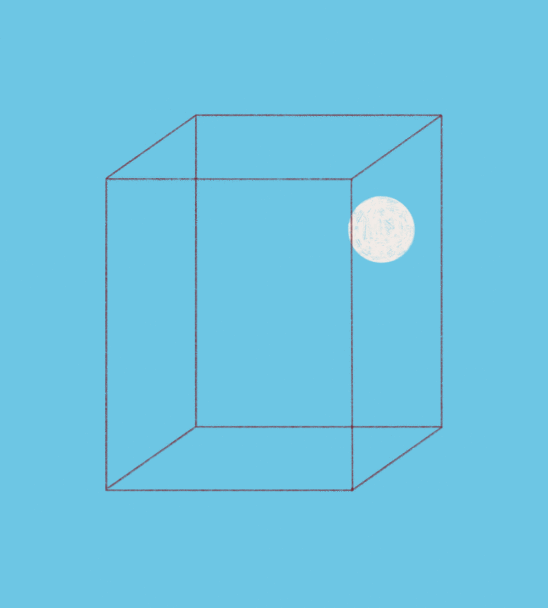
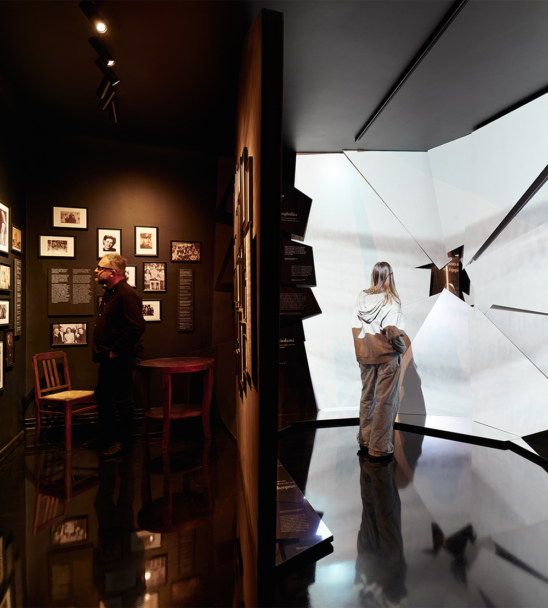
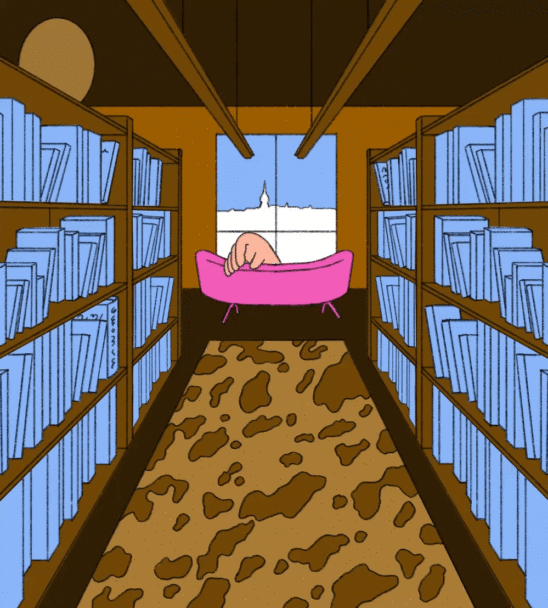
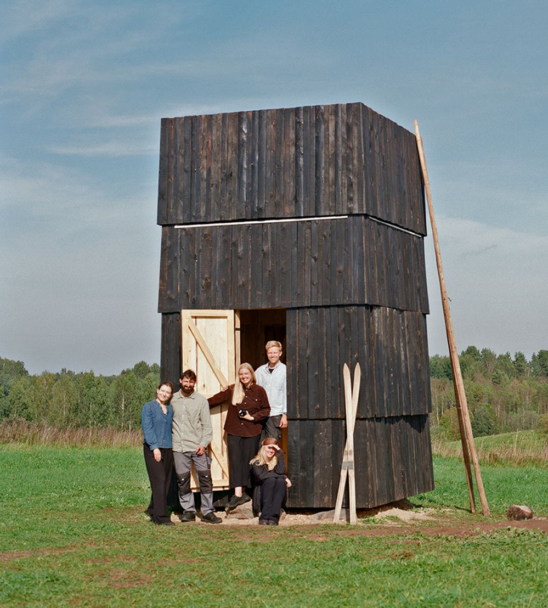
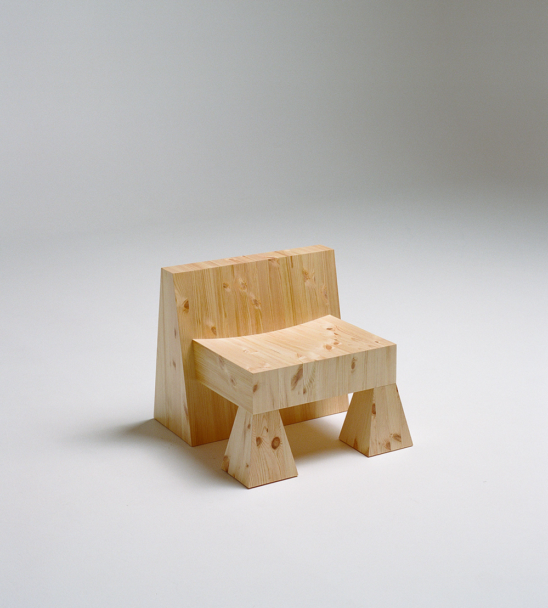
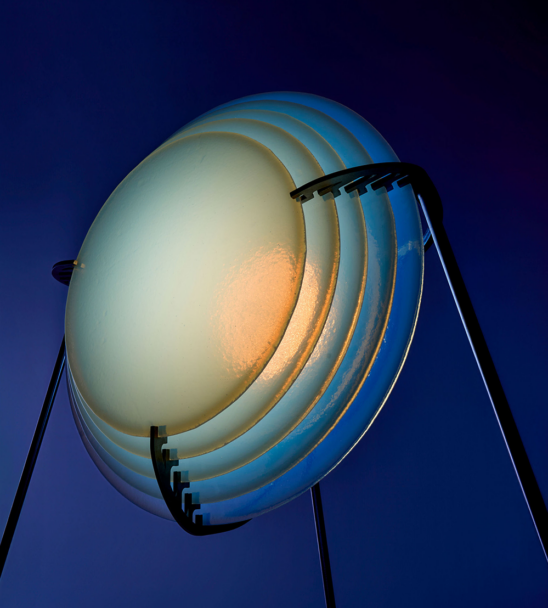
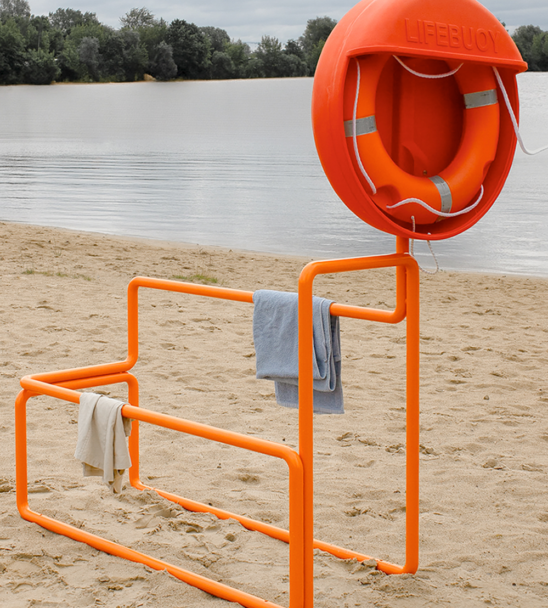
Viedokļi